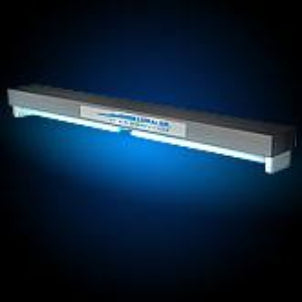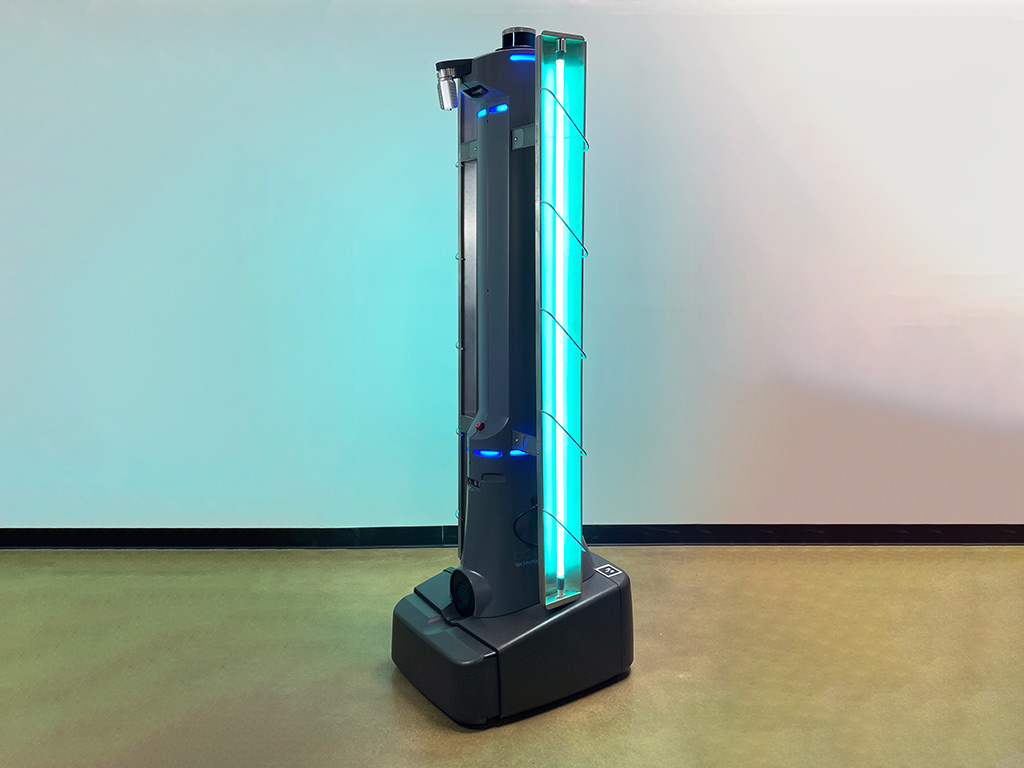Raise Your Cleanliness Requirements with Advanced UV Surface Disinfection Innovation
Raise Your Cleanliness Requirements with Advanced UV Surface Disinfection Innovation
Blog Article
UV Sanitation: The Cutting-Edge Modern Technology Changing Cleanliness Practices
In the world of cleanliness methods, one innovation has actually become a game-changer: UV disinfection. With its capacity to eliminate dangerous virus, this innovative innovation is reinventing the method we approach sanitation and hygiene. Just how does UV sanitation work, and what are the advantages it provides? From medical care settings to food handling, UV sanitation is making its mark in various markets. In this discussion, we will discover the details of this transformative innovation and look in advance to its encouraging future.
Just How UV Disinfection Functions
UV disinfection functions by utilizing ultraviolet light to ruin or suspend bacteria, providing a very efficient and chemical-free approach of sanitation. This innovation harnesses the power of short-wavelength UV-C light, which can harming the DNA and RNA of microorganisms, therefore providing them unable to create and recreate damage.
The procedure begins with the installment of UV sanitation systems, which contain UV lights that give off UV-C light. These lights are strategically put in areas where microbial contamination is an issue, such as water therapy plants, hospitals, research laboratories, and food handling facilities.
When microorganisms are subjected to UV-C light, the photons penetrate their cell wall surfaces and reach the DNA and RNA within. The high-energy UV-C photons interfere with the hereditary product by creating bonds between adjacent nucleotides, resulting in the development of thymine dimers. These dimers protect against the microorganisms from duplicating, making them safe.
UV sanitation is very effective against a large range of bacteria, consisting of viruses, parasites, and microorganisms. It is particularly effective versus waterborne virus like E. coli, Giardia, and Cryptosporidium. Moreover, UV disinfection is a chemical-free approach, removing the demand for possibly hazardous disinfectants and minimizing the threat of unsafe disinfection byproducts.
Benefits of UV Disinfection
UV disinfection offers many advantages in the area of sanitation, making it an extremely chosen approach for efficiently getting rid of harmful microorganisms. One of the crucial advantages of UV disinfection is its ability to supply a chemical-free option. Unlike standard sanitation approaches that count on chemicals, UV disinfection utilizes ultraviolet light to ruin the DNA of bacteria, rendering them not able to replicate and trigger infections. This not only gets rid of the demand for potentially hazardous chemicals however additionally decreases the risk of chemical deposit on surface areas.

UV disinfection is likewise very versatile in its applications. It can be made use of in various setups, consisting of healthcare facilities, institutions, food processing facilities, and water therapy plants. UV disinfection systems can be easily integrated right into existing sanitation techniques, giving an additional layer of protection against contagious conditions.
In addition to its efficiency and convenience, UV sanitation is also eco pleasant. It does not generate any kind of dangerous byproducts or residues, making it a sustainable and secure technique for cleanliness - uv surface disinfection. UV disinfection needs very little maintenance and has a long lifespan, resulting in price financial savings in the lengthy run.
UV Sanitation in Health Care Settings
In health care settings, UV sanitation has emerged as an innovative approach for successfully removing unsafe bacteria. UV sanitation works by giving off ultraviolet light at a specific wavelength that is lethal to germs, infections, and other microbes.
First of all, UV sanitation is a non-chemical technique, making it an eco-friendly option contrasted to typical disinfection approaches that commonly entail the usage of harsh chemicals. Making use of UV light removes the need for chemical anti-bacterials, decreasing the threat of unsafe residue or chemical exposure to both clients and healthcare employees.
Furthermore, UV sanitation is very effective in killing a vast array of microorganisms, including drug-resistant bacteria such as MRSA and C. difficile. It gives a constant and trustworthy sanitation procedure, ensuring that all surface areas and tools are thoroughly sanitized, even in hard-to-reach locations.

UV Sanitation in Food Handling
The application of UV disinfection extends past healthcare setups and discovers significant worth in the realm of food processing. uv surface disinfection. UV disinfection technology is coming to be progressively preferred in the food sector because of its ability to properly remove harmful virus and enhance food safety and security
Among the main advantages of UV disinfection in food processing is its capacity to target a vast array of microorganisms, including infections, molds, and bacteria. By using UV light at specific wavelengths, it is possible to disrupt the DNA and RNA of these microorganisms, rendering them unable to cause or duplicate damage. This modern technology can be related to various phases of the food processing chain, including surface sanitation, tools sanitation, and water therapy.
UV sanitation provides a non-thermal and chemical-free approach of disinfecting food. Unlike standard disinfection approaches about his that count on chemicals or heat, UV modern technology does not leave any type of residue or modify the preference, structure, or nutritional value of the food. This makes it an optimal service for industries that need stringent adherence to high quality standards.
In addition, UV disinfection systems are easy to install and operate, requiring very little maintenance. They can be integrated right into existing processing lines without causing considerable disruptions to the production process. Furthermore, UV systems have a quick treatment time, permitting continual processing and reducing downtime.
The Future of UV Disinfection

One location where UV sanitation is anticipated to make significant innovations remains in the area of health care. With the rise of antibiotic-resistant microorganisms and the need for more effective disinfection techniques, UV light has the possible to play a crucial role in decreasing healthcare-associated infections. UV disinfection systems can be utilized to sanitize surface areas, tools, and also the air in medical care centers, helping to avoid the spread of damaging microorganisms and enhance individual safety and security.
One more market that could take advantage of innovations in UV sanitation innovation is the food market. UV light has currently verified to be an efficient method for decontaminating food and lowering the danger of foodborne health problems. As modern technology boosts, we can anticipate to see a lot more effective and affordable UV sanitation systems being carried out in food processing plants, making certain that the food we eat is risk-free and without damaging bacteria.
Final Thought
To conclude, UV disinfection is a cutting-edge modern technology that is changing cleanliness practices in healthcare setups and food handling. By utilizing UV light to eliminate or shut down microorganisms, it uses countless benefits such as performance, safety, and effectiveness. With ongoing advancements in this field, UV sanitation holds excellent potential for the future of cleanliness, providing a reliable and sustainable service for preserving tidy and hygienic environments.
UV disinfection is a chemical-free technique, removing the need for see this site potentially unsafe disinfectants and minimizing the threat of hazardous sanitation by-products.
Unlike traditional disinfection techniques that count on chemicals, UV disinfection makes use of ultraviolet light to damage the DNA of microorganisms, rendering them not able to reproduce and cause infections. Unlike conventional disinfection techniques that depend on chemicals or warmth, UV technology does not read more leave any residue or alter the preference, appearance, or dietary worth of the food. As modern technology enhances, we can anticipate to see extra affordable and reliable UV sanitation systems being applied in food handling plants, making certain that the food we consume is safe and totally free from unsafe microorganisms.
In verdict, UV sanitation is an innovative innovation that is transforming cleanliness methods in medical care setups and food handling.
Report this page